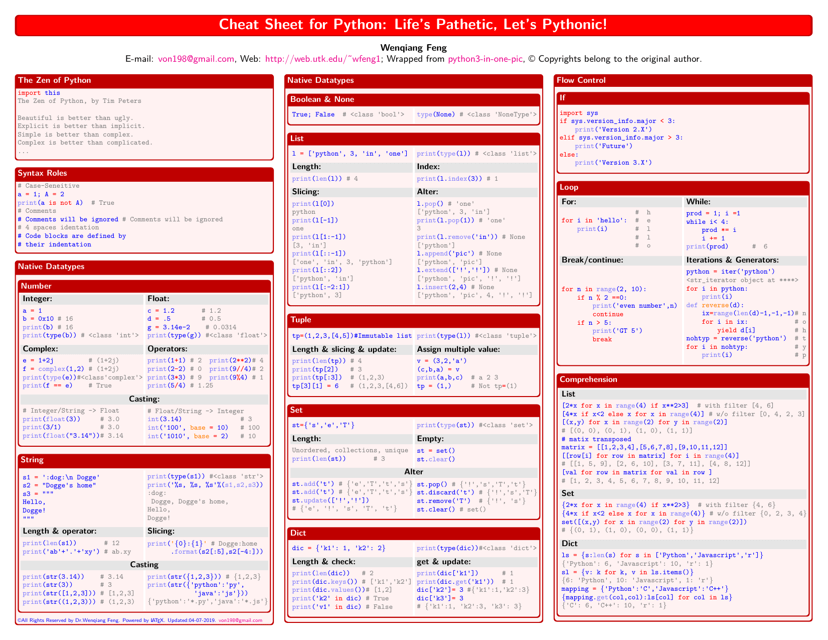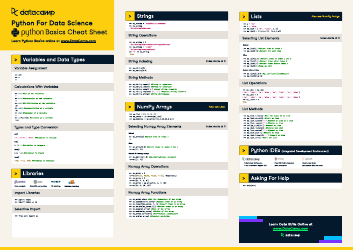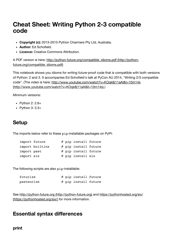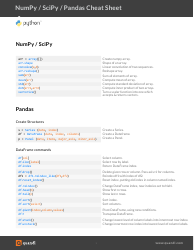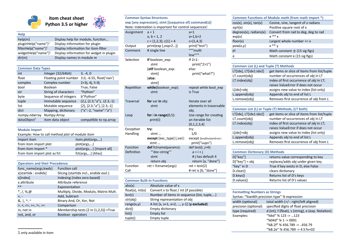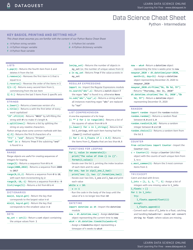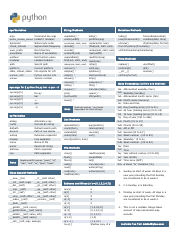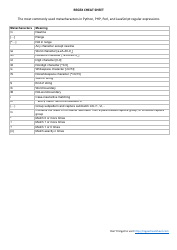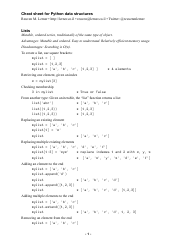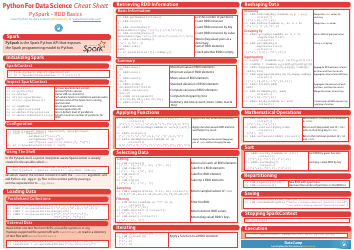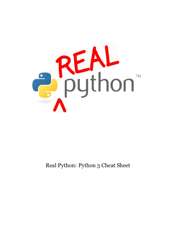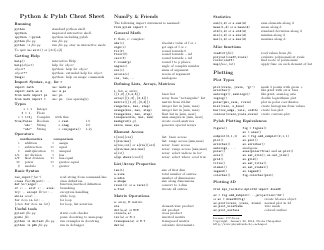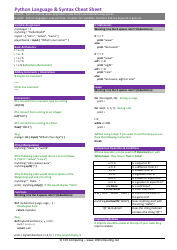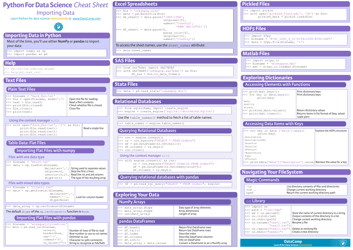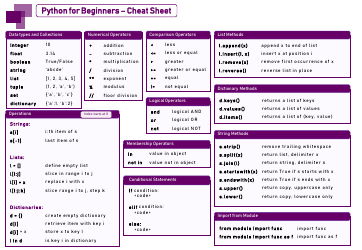Cheat Sheet for Python
A cheat sheet for Python is a quick reference guide that provides a summary of commonly used Python syntax, functions, and concepts. It aims to help programmers quickly find the information they need while coding in Python.
FAQ
Q: What is Python?
A: Python is a high-level programming language.
Q: What are the main features of Python?
A: Python has a readable and easy-to-learn syntax, supports multiple programming paradigms, and has a large standard library.
Q: What can Python be used for?
A: Python can be used for web development, data analysis, artificial intelligence, scientific computing, and more.
Q: How do you define a function in Python?
A: You can define a function in Python using the 'def' keyword, followed by the function name and parameters.
Q: What are the data types in Python?
A: Python has built-in data types such as integers, floats, strings, lists, and dictionaries.
Q: How do you comment in Python?
A: You can comment in Python by placing a '#' symbol at the beginning of the line.
Q: How do you iterate over a list in Python?
A: You can use a 'for' loop to iterate over a list in Python.
Q: What is a module in Python?
A: A module in Python is a file containing Python code that can be imported and used in other Python programs.
Q: What is the difference between '==' and 'is' in Python?
A: The '==' operator checks for equality of values, while the 'is' operator checks for object identity.
Q: How do you handle exceptions in Python?
A: You can use a 'try' and 'except' block to handle exceptions in Python.
